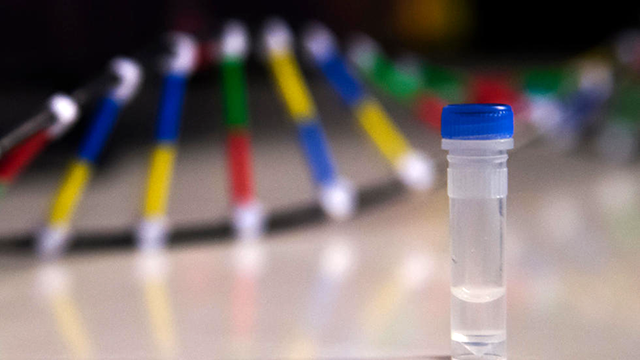You are here
Human pangenome ushers in ‘new age of genetic diagnosis’
By AFP - May 13,2023 - Last updated at May 13,2023

AFP photo
PARIS — Scientists on Wednesday unveiled the first draft of a human “pangenome”, a more diverse and accurate DNA blueprint for our species that they hope will help shed light on a range of diseases.
The announcement was hailed by researchers as a major scientific milestone that “heralds a new age of genetic diagnosis”.
The first human genome was sequenced in 2003, providing a reference point for all other human sequences to be compared to.
The breakthrough allowed scientists to identify genes that cause specific diseases, paved the way for the still growing field of personalised medicine, and shed new light on human evolution.
However 70 per cent of the genetic data for this original genome reference came from a single person — a man who answered a newspaper advert in Buffalo, New York, in 1997 — with snippets from 20 others.
This meant it had many gaps and did not work as well as a reference for people from other ethnicities and races, prompting concerns about bias and inequality.
In a series of papers published in the journal Nature, a large team of international researchers described the first draft of a more inclusive “pangenome” reference that they say more accurately reflects humanity.
The group, called the Human Pangenome Reference Consortium, said they have now compiled the genomes of 47 people from different backgrounds — and plan to increase that number to 350 by the middle of next year.
The 47 people are anonymous, having consented for their genomes to be used as part of a previous project.
More than half came from Africa, 34 per cent from the Americas, with six people from Asia and one, an Ashkenazi Jew, from Europe. Oceania was not represented.
The researchers said that they were looking into how best to include people from other areas and backgrounds as the project continues.
The genome is the genetic blueprint of every organism — the complete set of DNA containing the instructions it needs to survive and thrive.
Any two people’s genomes are more than 99 per cent identical — but the tiny differences can point towards an individual’s potential to develop particular diseases.
So the pangenome reference could have a vast — and difficult to predict — range of future applications for health, the researchers said.
One of the study co-authors, Benedict Paten of the University of California, said it would make it easier to spot small differences in new genetic samples.
“This will ultimately help improve genetic testing and simultaneously give us a clearer understanding of the contribution of all types of genetic variation to health and disease,” he told an online press conference.
Another study co-author, Erich Jarvis of Rockefeller University, said just one example was gene clusters known as major histocompatibility complex (MHC), which are involved in the body’s immune system.
“It was impossible to study MHC diversity” previously because it differs so much between every person, Jarvis said.
But the pangenome reference “will help us understand how immune responses against specific pathogens vary among people”, he said.
It could also help better match organ transplant donors with patients, he added in a statement.
David Adelson, an expert in genetics at Australia’s University of Adelaide who was not involved in the research, said that even in the draft phase, the pangenome had already increased the accuracy of detecting genetic changes by 34 per cent.
“This paper heralds a new age of genetic diagnosis, that will benefit people from all ancestries, unlike our current reference genome that does not reflect all the diversity of humanity,” he said.
The pangenome represents “a milestone in human genetics”, but challenges remain, two US experts, Arya Massarat and Melissa Gymrek, warned in Nature.
As well as including more samples from currently under-represented groups, adoption will take time as scientists need to be trained how to use the new reference, they said.
Nonetheless, “this will ultimately make it easier to discover genetic variants that mediate physical and clinical traits and — it is to be hoped — will eventually lead to better health outcomes for many people,” they added.
Related Articles
TOKYO — Imagine the body's instruction manual, the genome: here words are genes, letters are DNA, and the equivalent of typos can have disas
Chipping away at the genome of a tiny parasitic bacteria, genetic-sequencing trailblazer J.
PARIS — Analysis of the genomes of hundreds of people from across Africa has shed light on ancient migrations and modern susceptibility and














